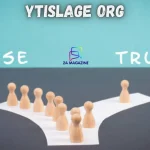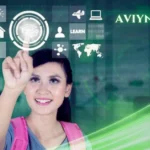Education has evolved tremendously over the years, moving beyond traditional textbooks and lectures to incorporate more interactive and engaging teaching methods. One of the most transformative approaches is hands-on learning, which emphasizes active participation and experiential education. By involving students in practical tasks and real-world problem-solving, this method fosters deeper understanding, critical thinking, and long-term retention.
This article explores the various benefits of hands-on learning, its application across different subjects, and how it is shaping the future of education.
Why Hands-On Learning Works
Hands-on learning is rooted in the principle that students learn best by doing. Instead of passively absorbing information, learners are actively engaged in the process, which helps them internalize knowledge more effectively.
Enhanced Retention and Comprehension
One of the primary advantages of hands-on learning is its ability to improve memory and understanding. Studies have shown that students retain information better when they engage in activities such as building, experimenting, or exploring concepts through interactive exercises. For instance, a student who constructs a working model of a volcano is more likely to understand the geological processes involved than one who merely reads about it.
Development of Critical Thinking Skills
Hands-on activities often involve problem-solving, decision-making, and creativity. These experiences encourage students to think critically about the task at hand and come up with innovative solutions. This skill is invaluable in today’s world, where adaptability and analytical thinking are highly prized.
Boosting Engagement and Motivation
Practical learning experiences are inherently more engaging than traditional lectures. Students are more motivated to participate and explore topics when they can see the direct results of their efforts. This active involvement fosters a sense of achievement and encourages a positive attitude toward learning.
Applications Across Different Subjects
Hands-on learning can be integrated into virtually every subject, enhancing the educational experience across the board.
Science and Technology
Science is inherently experimental, making it a perfect fit for hands-on approaches. Laboratory experiments, field studies, and robotics projects allow students to observe theories in action and develop practical skills. In technology education, building circuits, coding, and designing prototypes prepare students for real-world applications in engineering and IT fields.
Mathematics
Though often considered abstract, mathematics can also benefit from hands-on learning. Activities like using manipulatives, creating graphs, or solving real-life problems help demystify complex concepts. For example, calculating the trajectory of a ball during a physics experiment merges math and practical application seamlessly.
Arts and Humanities
Creative arts and humanities thrive on experiential learning. Painting, sculpting, drama, and music involve active participation, allowing students to express themselves and explore cultural perspectives. Similarly, history lessons can come alive through role-playing activities or creating timelines and models that depict historical events.
Vocational Education
Hands-on learning is a cornerstone of vocational training. Whether it’s carpentry, culinary arts, or automotive repair, practical skills are best acquired through direct experience. These programs not only equip students with job-specific competencies but also instill confidence in their abilities.
Challenges and Solutions in Implementing Hands-On Learning
While hands-on learning has numerous benefits, integrating it into the classroom isn’t always straightforward. Schools and educators often face challenges that require thoughtful solutions.
Limited Resources
Not all schools have access to the tools and materials needed for hands-on activities. Budget constraints can make it difficult to set up labs, workshops, or creative spaces. However, innovative solutions like using low-cost or recycled materials, collaborating with local businesses, and seeking grants can help overcome these barriers.
Time Constraints
Hands-on learning often requires more time than traditional teaching methods. Balancing this with the need to cover extensive curricula can be challenging. Educators can address this by integrating practical activities into existing lesson plans or focusing on a few high-impact projects rather than trying to do too much.
Teacher Training
Not all educators are trained to implement hands-on methods effectively. Professional development programs and workshops can equip teachers with the skills and confidence needed to embrace this approach. Sharing best practices and collaborating with peers can also foster innovative teaching strategies.
The Future of Education: Embracing Innovation
As the world becomes increasingly interconnected and technology-driven, education must adapt to prepare students for the future. Hands-on learning will play a pivotal role in this transformation, bridging the gap between theoretical knowledge and practical application.
Blended Learning Models
The integration of hands-on learning with digital tools is already reshaping education. Blended learning models combine face-to-face instruction with online resources, allowing students to experiment, create, and explore at their own pace. Virtual labs, simulations, and 3D printing are just a few examples of how technology can enhance practical learning experiences.
Focus on STEM Education
STEM (Science, Technology, Engineering, and Mathematics) education emphasizes hands-on exploration, problem-solving, and innovation. Programs like robotics clubs, coding bootcamps, and maker spaces are equipping students with the skills they need to thrive in a technology-driven world.
Global Collaboration and Exchange
Hands-on learning is not limited to the classroom. Collaborative projects that connect students across the globe encourage cultural exchange and broaden perspectives. These initiatives prepare learners for a world where teamwork and communication across borders are essential.
Conclusion
Hands-on learning is more than just a teaching method—it’s a philosophy that empowers students to become active participants in their education. By fostering critical thinking, creativity, and practical skills, this approach prepares learners for the challenges and opportunities of the modern world.
For educators and institutions, embracing hands-on learning means investing in the future. It requires commitment, innovation, and a willingness to adapt, but the rewards—both for students and society—are immeasurable.
As we continue to explore new ways of making education more impactful, resources like Nasco Education play a vital role in providing tools and materials to bring hands-on learning to life.
By prioritizing experiential education, we can cultivate a generation of learners who are not only knowledgeable but also capable of applying their skills to make a meaningful impact on the world.







